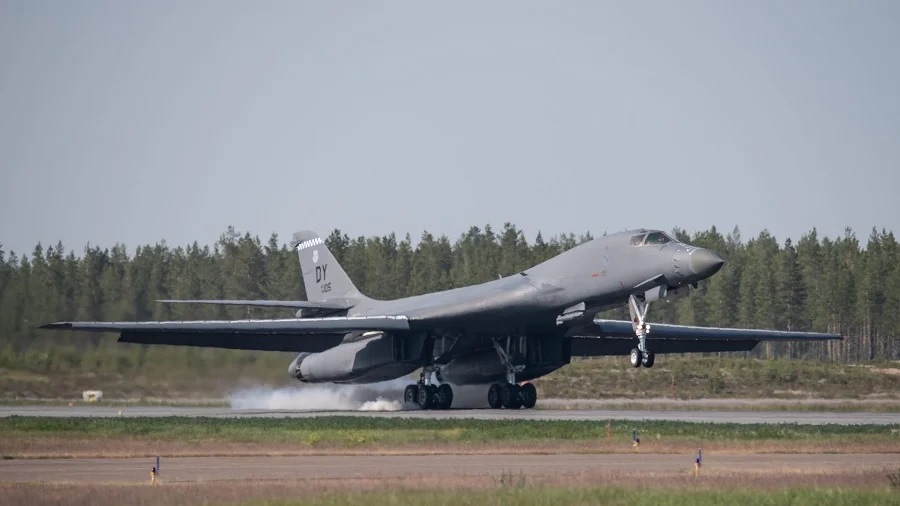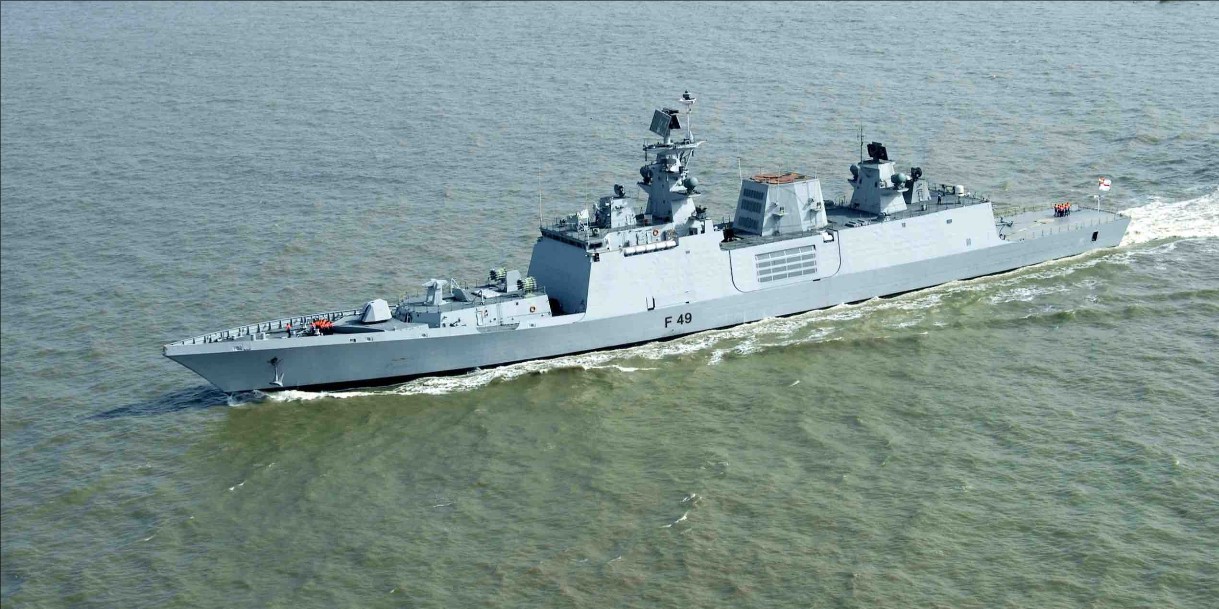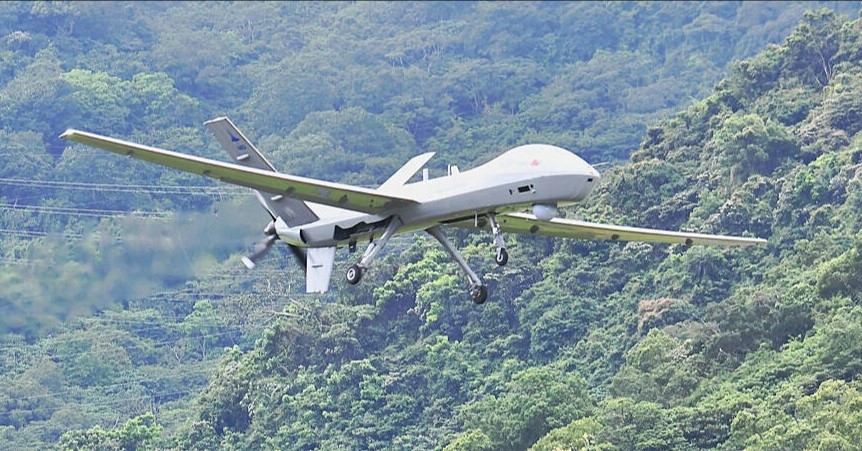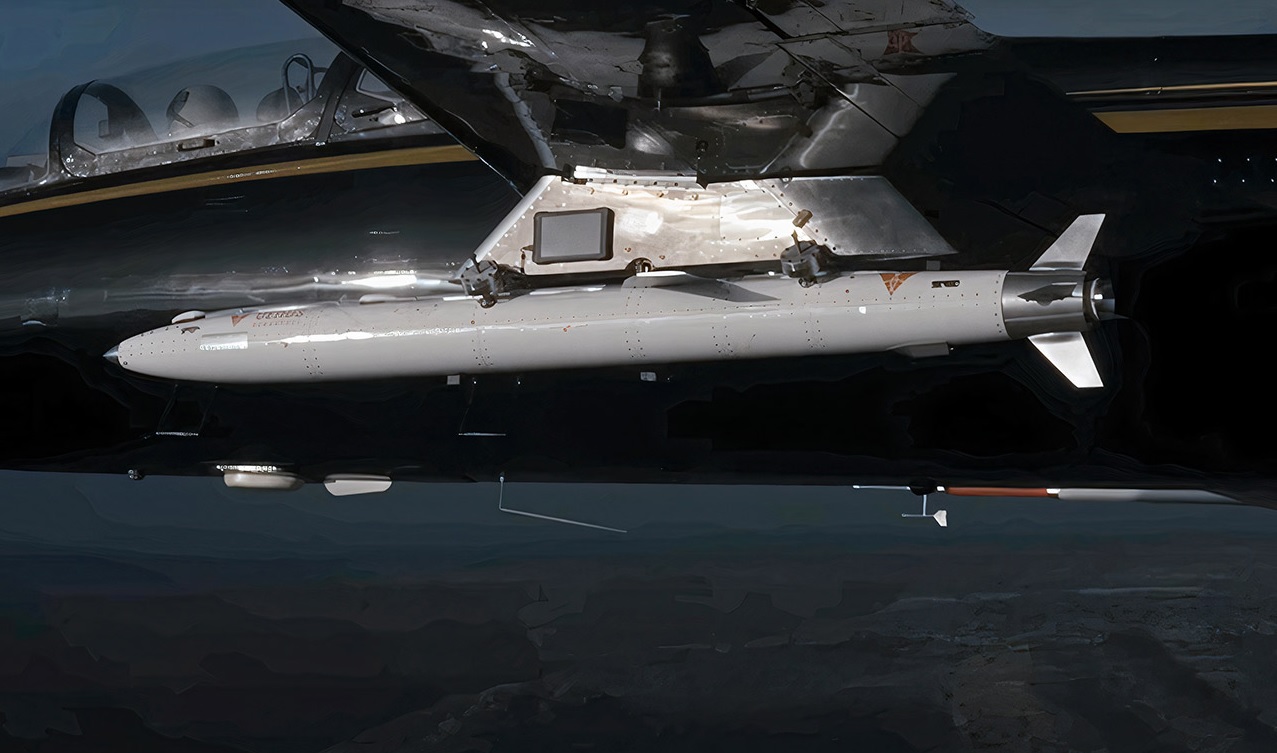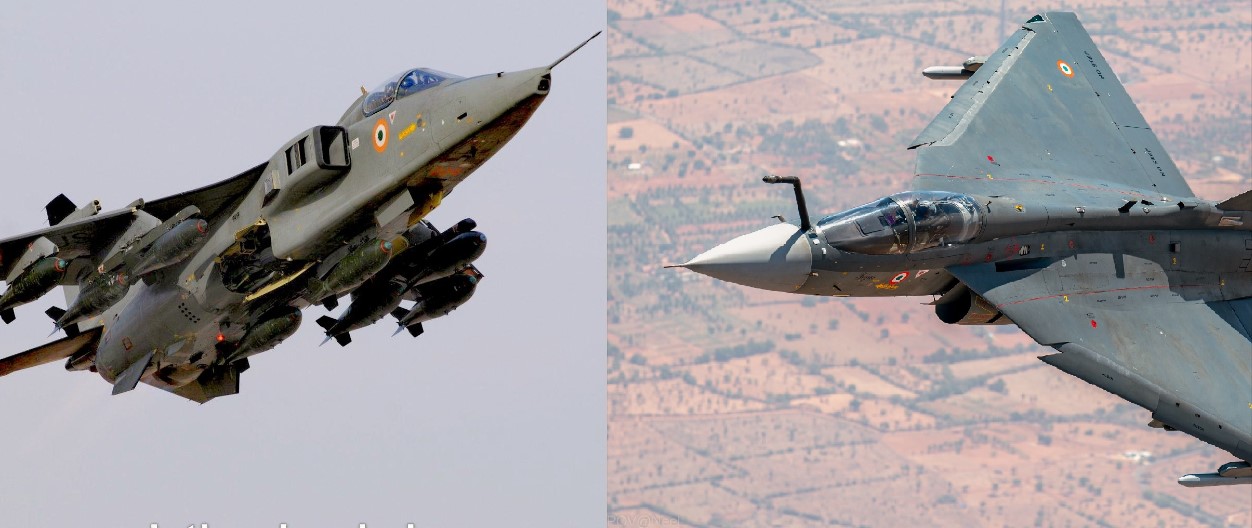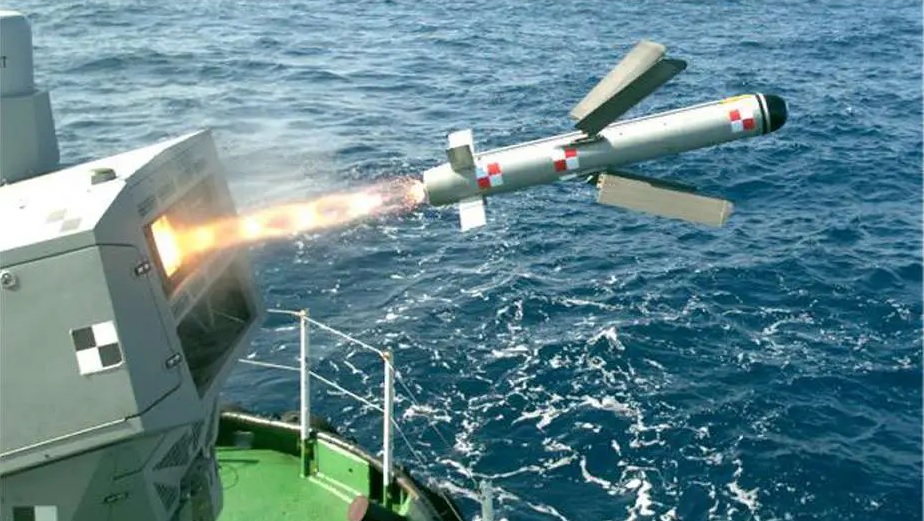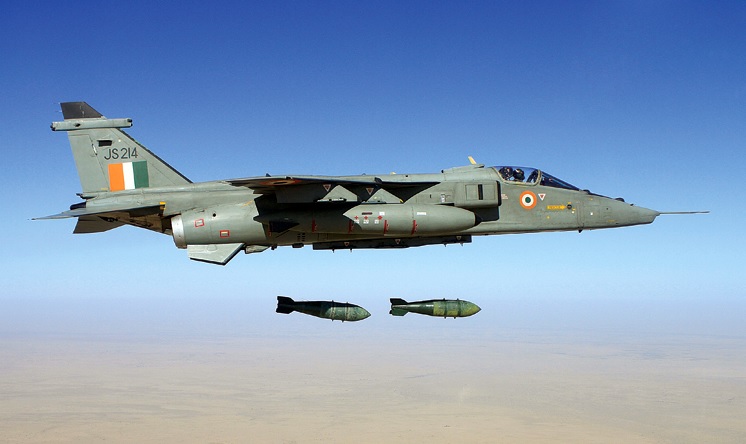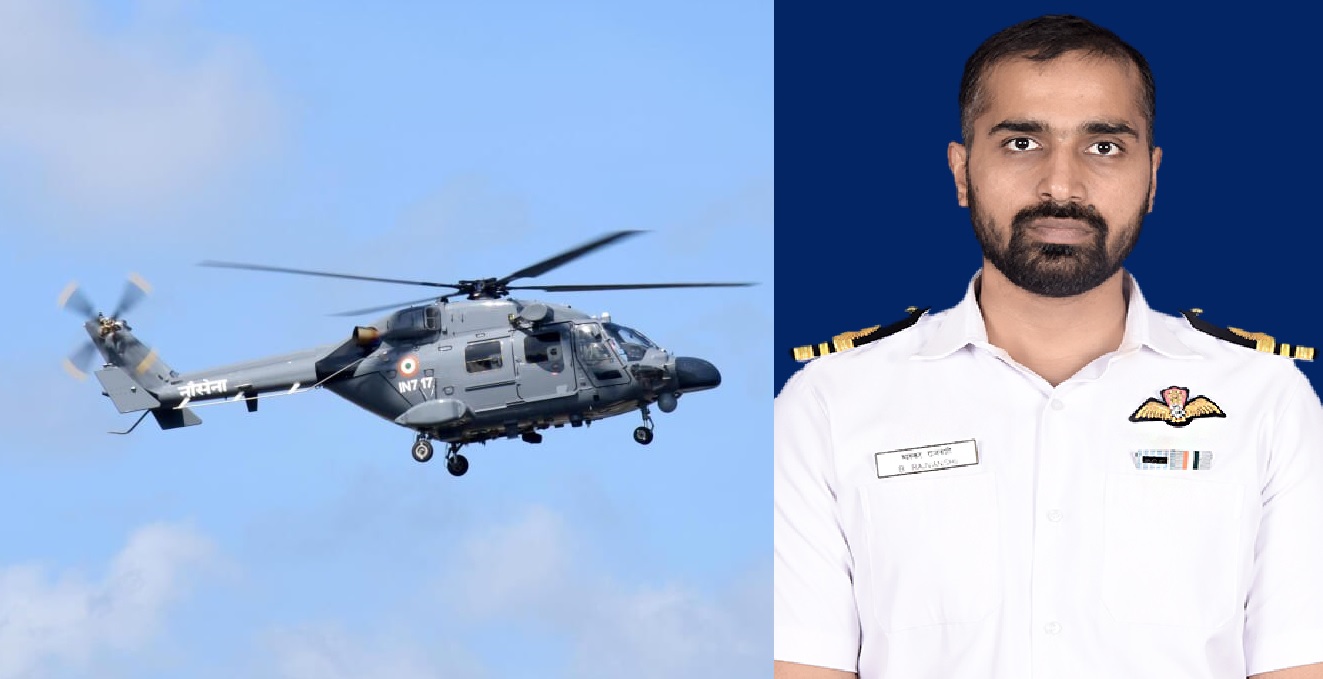World
Latest Defence News Pakistan ,U.S In a recent congressional hearing on China, Lt Gen Jeffrey Kruse, Director of the Defence Intelligence Agency, highlighted Pakistan's steadfast nuclear modernisation efforts despite economic turmoil. Kruse emphasized that Pakistan's defence policy continues to be significantly influenced by its contentious relationship with India, a sentiment echoed by top American lawmakers.Despite facing economic challenges, Pakistan has prioritized its nuclear modernisation efforts, as underscored by the Stockholm International Peace Research Institute's report indicating its possession of 170 nuclear warheads as of January 2023. Kruse emphasized that Pakistan's nuclear ambitions persist alongside its ongoing efforts to seek international support, including from the UN Security Council, to address the Kashmir dispute with India.Kruse further noted that while Pakistan has experienced an increase in terrorist violence against its security forces and civilians, cross-border violence between India and Pakistan has decreased since both countries reaffirmed a ceasefire agreement in February 2021. This decrease in cross-border violence has been accompanied by Pakistan's ongoing efforts to modernize its nuclear arsenal and enhance the security of its nuclear materials and command and control systems.Highlighting specific developments, Kruse mentioned Pakistan's successful test of its Ababeel medium-range ballistic missile in October. Additionally, he reported that Pakistani security forces have been engaged in nearly daily counterterrorism operations in response to heightened militant activity, with approximately 400 security forces killed in 2023, marking a nine-year high.The strained relations between Islamabad and New Delhi stem primarily from the Kashmir issue and cross-border terrorism originating from Pakistan. Pakistan's decision to downgrade diplomatic ties with India in 2019 following India's revocation of Article 370 further exacerbated tensions between the two countries. In contrast, India maintains its stance of seeking normal neighborly relations with Pakistan while emphasizing Islamabad's responsibility to create an environment free from terrorism and hostility for meaningful engagement. India asserts that its constitutional measures in Jammu and Kashmir are internal matters aimed at fostering socio-economic development and good governance within its territory.Against this backdrop, Pakistan's nuclear modernisation efforts persist amidst economic challenges and regional tensions, underscoring the complex dynamics shaping South Asian security. As Pakistan navigates these challenges, its interactions with international partners, including close allies like China and Saudi Arabia, as well as engagements with multilateral institutions such as the International Monetary Fund, will continue to play a crucial role in shaping its security and economic trajectory.
Read More → Posted on 2024-04-16 15:22:20World
Latest Defence News Russia ,Ukraine ,U.S Ukraine finds itself in a critical situation as it grapples with the aftermath of a devastating Russian missile attack on its energy infrastructure. President Volodymyr Zelenskiy's recent remarks shed light on the severity of the crisis, emphasizing the urgent need for enhanced air defense capabilities.Zelenskiy revealed that a lack of air defense missiles hampered Ukraine's ability to thwart the Russian missile assault that targeted the Trypilska thermal power plant, located near the capital Kyiv. Of the 11 missiles launched, only seven could be intercepted, leaving four to inflict significant damage on the power plant. The consequences of this attack are dire, as the Trypilska plant, with its capacity of 1,800 megawatts, played a crucial role in meeting the energy demands of Kyiv and its surrounding region.The assault on the Trypilska plant is part of a broader escalation in Russian strikes on Ukraine's energy infrastructure. Since mid-March, Russia has intensified its combined missile and drone attacks, aiming to cripple Ukraine's grid system. These attacks have inflicted substantial damage, resulting in the loss of approximately 7 gigawatts of power generating capacity and impairing the transmission capabilities of key facilities.Ukraine's vulnerability to such attacks has been exacerbated by the scarcity of air defense systems. Despite repeated warnings from Ukrainian authorities, the country remains ill-equipped to defend against aerial threats. Zelenskiy has cautioned that Ukraine could exhaust its supply of defensive missiles if Russian aggression persists unabated.In response to these challenges, Ukraine has appealed to its Western allies for support. However, the provision of additional air defense systems has been met with reluctance. While Germany has committed to delivering one Patriot system in response to Kyiv's urgent pleas, Ukraine asserts the need for at least 25 such systems to adequately cover its territory.The repercussions of the energy crisis extend beyond immediate infrastructure damage. With the loss of critical power generating capacity, Ukraine faces the prospect of widespread electricity shortages. While alternative stations and imports have temporarily mitigated the shortfall, residents are urged to conserve energy to alleviate strain on the grid.Russia claims that its attacks are retaliatory measures aimed at undermining Ukraine's ability to defend itself, citing recent incidents within its own borders as justification. However, the disproportionate impact on civilian infrastructure underscores the humanitarian toll of such actions.As Ukraine grapples with the aftermath of these devastating attacks, the international community must heed its calls for assistance. The provision of vital air defense systems is imperative to safeguarding Ukraine's sovereignty and ensuring the stability of the region. Failure to act swiftly risks further escalation of the crisis and deepening the suffering of the Ukrainian people.
Read More → Posted on 2024-04-16 15:16:57World
Latest Defence News U.S On April 15, 2024, two U.S. Air Force B-1B Lancers executed a planned training mission from Morón Air Base, Spain, to Incirlik Air Base, Türkiye, as part of Bomber Task Force 24-2. This routine exercise aimed at enhancing operational readiness and interoperability between U.S. and Turkish military forces.The integration of the U.S. aircraft with Turkish fighter jets during the mission underscores the commitment to joint training and collaboration between the two nations. Col. Kevin Lord, the 39th Air Base Wing Commander, expressed gratitude to Turkish hosts for facilitating the training opportunity and their continuous support to the Incirlik community.Officials from U.S. European Command, U.S. Air Forces in Europe, and the 39th Air Base Wing highlighted the significance of partnerships with the Turkish Ministry of Defense in fostering cooperation and strengthening regional security.Bomber Task Force 24-2 forms part of the broader Large Scale Global Exercise 2024, encompassing various exercises and military activities across combatant commands. This initiative enables U.S. forces to engage with Allies and partners, enhancing mutual understanding, trust, and interoperability on security challenges.Throughout the BTF 24-2 deployment, the bombers and supporting personnel will undertake a series of missions to train alongside Allies and partners. The U.S. Air Forces in Europe-Air Forces Africa (USAFE-AFAFRICA) emphasizes dynamic force employment in the European theater, providing strategic predictability and assurance to Allies and partners while contributing to deterrence by introducing operational unpredictability for potential adversaries.Such routine engagements serve to reinforce the shared commitment to regional security and stability, reflecting the ongoing efforts of both U.S. and Turkish forces in promoting cooperation and readiness in the face of evolving security dynamics.
Read More → Posted on 2024-04-16 15:12:22World
Latest Defence News Israel ,IranIsraeli defense and intelligence forces recently utilized GPS jamming technology to effectively counter an imminent threat posed by a swarm of Iranian drones and missiles targeting Israeli territories. This strategic maneuver showcased Israel's technological prowess in addressing regional security challenges.The Israel Defense Forces (IDF) deployed advanced jamming technology to disrupt the GPS guidance systems of Iranian drones and missiles, thereby preventing them from accurately striking their intended targets. This proactive measure was instrumental in safeguarding Israeli territory and populations from potential harm orchestrated by Iran.An IDF spokesperson affirmed the efficacy of the GPS jamming technique, emphasizing Israeli intelligence's ability to identify and neutralize the impending threat posed by Iranian aerial assets. The precise jamming of GPS signals played a crucial role in averting potential damage and ensuring the safety of Israeli citizens.The Iranian assault was reportedly launched in retaliation for what Iran perceived as an Israeli attack on its embassy compound in Syria earlier in April, resulting in the deaths of senior Revolutionary Guards commanders. This incident exacerbated existing tensions fueled by conflicts in Gaza and confrontations with Iran's regional allies.Despite the launch of over 300 missiles and drones targeting Israel, the damage inflicted was relatively minimal. The majority of these projectiles were intercepted by Israel's Iron Dome defense system, with additional support from the United States, Britain, France, and Jordan.The most significant injury reported in Israel was sustained by a 7-year-old child, who suffered from shrapnel wounds as a result of the attack.President Joe Biden communicated to Israel that the United States would not participate in any retaliatory actions. However, Israel, led by Minister Benny Gantz, affirmed its intention to hold Iran accountable for its aggression and indicated that retaliatory measures would be undertaken at an appropriate time and manner.While specific operational details remain classified, Israeli officials reiterated their unwavering commitment to confronting and neutralizing any threats to national security.
Read More → Posted on 2024-04-16 06:58:22India
Latest Defence News IndiaThe Indian Navy has recently unveiled two new corvettes, the INS Kavaratti and INS Kiltan, signaling a substantial enhancement in its anti-submarine warfare capabilities. These vessels mark a significant departure from traditional naval construction, incorporating cutting-edge carbon fiber composite superstructures developed by Sweden's Saab.The adoption of carbon fiber technology represents a pivotal advancement in naval engineering. Unlike conventional metal superstructures, carbon fiber offers unparalleled strength-to-weight ratio, resulting in a considerable reduction in overall vessel weight. This reduction translates into enhanced agility, maneuverability, and fuel efficiency, critical attributes in combat scenarios.Of particular importance is the stealth advantage conferred by carbon fiber. Its low radar reflectivity renders the INS Kavaratti and INS Kiltan less susceptible to detection by enemy surveillance systems. This stealth capability affords the vessels greater operational flexibility, enabling prolonged periods of covert operation.An Indian Navy spokesperson underscored the strategic significance of the carbon fiber superstructures, emphasizing their role in augmenting the fleet's stealth capabilities, agility, and operational versatility. The collaboration with Saab, renowned for its technological prowess, underscores the value of international partnerships in advancing naval innovation.In addition to their performance benefits, carbon fiber boasts inherent resistance to corrosion, mitigating maintenance requirements and extending the operational lifespan of the vessels. This represents a further cost-saving advantage for the Indian Navy over the long term.The INS Kavaratti and INS Kiltan exemplify India's commitment to leveraging cutting-edge technology to bolster its maritime capabilities. With their advanced carbon fiber superstructures, these corvettes stand poised to redefine the standards of naval warfare, enhancing India's maritime security posture in the process.
Read More → Posted on 2024-04-16 06:42:34World
Latest Defence News U.S ,Israel ,IranIn a diplomatic move aimed at quelling tensions in the Middle East, United States Secretary of State Antony Blinken emphasized the nation's unwavering support for Israel following a recent attack by Iran. Addressing the situation during a meeting with Iraq's Deputy Prime Minister Mohammed Ali Tamim, Blinken reiterated the US stance of not seeking escalation while affirming its commitment to defending Israel and safeguarding American personnel in the region.The catalyst for the recent escalation was Iran's launch of over 300 drones and missiles towards Israel, purportedly in retaliation for a deadly strike on Iran's consulate in Syria earlier this month, which Tehran attributed to Israel. Fortunately, the majority of these projectiles were intercepted before reaching their intended targets, thanks in part to the collaborative efforts of the United States, Jordan, and other allies.Blinken underscored the importance of diplomatic efforts in mitigating the crisis, highlighting a series of engagements with key regional and international counterparts over the past 36 hours. Notably, he held discussions with counterparts from Egypt, Saudi Arabia, Jordan, Turkey, Britain, and Germany to coordinate a diplomatic response aimed at preventing further escalation.Iraq's Deputy Prime Minister echoed concerns about the potential for the region to be drawn into a broader conflict, emphasizing the need for all parties to exercise restraint to preserve international security and safety.The meeting between Blinken and Tamim preceded talks between US President Joe Biden and Iraqi Prime Minister Mohamed Shia al-Sudani at the White House, indicating the significance of the situation and the urgency with which it is being addressed at the highest levels of government.In reaffirming its support for Israel and advocating for diplomatic solutions, the United States aims to de-escalate tensions in the region and prevent further destabilization. As the situation continues to unfold, diplomatic efforts will remain crucial in navigating the complexities of the Middle East and promoting peace and stability.
Read More → Posted on 2024-04-16 06:33:30World
Latest Defence News Iran ,ChinaIn the wake of recent drone and missile attacks, Iran has conveyed a message of restraint to China, signaling its commitment to avoiding further escalation in the ongoing conflict with Israel. This message was delivered by Iranian Foreign Minister Hossein Amir-Abdollahian to his Chinese counterpart, Wang Yi, during a crucial phone call on Monday. The development comes amidst heightened tensions in the region, with both Iran and Israel engaged in a series of attacks and counterattacks.Amidst the escalating violence in the region, Iran's affirmation of restraint is significant. Amir-Abdollahian emphasized Iran's willingness to exercise restraint and reiterated its stance on supporting an immediate ceasefire in Gaza. Furthermore, Iran expressed support for China's efforts to promote peace in the region and enhance cooperation among neighboring countries. This diplomatic outreach underscores Iran's recognition of the sensitivity of the current situation and its commitment to de-escalation.The ongoing conflict in Gaza, which has persisted for six months, has led to a staggering loss of life, with thousands of casualties reported on both sides. Israel's announcement of a potential ground offensive further raises concerns about the humanitarian crisis in the region. However, Iran's recent air strikes have introduced a new dimension to the conflict, potentially altering Israel's strategic calculus.Notably, Israel has refrained from claiming responsibility for an attack on the Iranian embassy compound in Damascus earlier this month. Despite accusations from Iran and Syria, Israel's response to these allegations remains ambiguous. The uncertainty surrounding Israel's involvement in the attack adds complexity to the already volatile situation in the Middle East.China's response to the escalating conflict has been characterized by condemnation of the attack on the Iranian embassy compound and a call for maximum restraint from all parties involved. Wang Yi, in his conversation with Amir-Abdollahian, reiterated China's commitment to upholding international law and promoting peace in the region. Additionally, Wang emphasized the importance of dialogue and cooperation in resolving the crisis, underscoring China's role as a mediator in the conflict.China's engagement with both Iran and Saudi Arabia reflects its efforts to play a constructive role in mitigating tensions in the Middle East. Wang's outreach to Saudi Arabia underscores China's commitment to fostering dialogue and cooperation among regional stakeholders. Furthermore, China's special envoy on Middle East affairs, Zhai Jun, reiterated the importance of maintaining calm and restraint in the face of escalating violence.However, Israel's response to China's stance has been less than favorable. Israeli officials have expressed dissatisfaction with China's perceived lack of support and urged Beijing to acknowledge Israel's right to defend itself. Moreover, Israel's Defense Forces chief of staff, General Herzi Halevi, has issued a warning of a potential retaliation against Iran in response to the recent air attacks.The United States has also weighed in on the situation, urging both Israel and Iran to exercise restraint and avoid further escalation. President Joe Biden's call to Israeli Prime Minister Benjamin Netanyahu emphasizes the importance of strategic decision-making amidst heightened tensions. The US's efforts to prevent a wider conflict in the region highlight the significance of international diplomacy in de-escalating the crisis.In conclusion, Iran's assurance of restraint to China marks a significant development in the ongoing conflict with Israel. Amidst escalating violence and heightened tensions, diplomatic efforts to promote dialogue and de-escalation are paramount. China's role as a mediator in the conflict underscores the importance of multilateral cooperation in resolving regional crises. However, the situation remains fluid, and the actions of key stakeholders will determine the trajectory of the conflict in the coming days.
Read More → Posted on 2024-04-16 06:27:04India
Latest Defence News India ,PhilippineHindustan Aeronautics Limited (HAL) is ramping up its production capabilities to meet the burgeoning demands of the Indian armed forces while eyeing lucrative international markets. In a recent interview, CB Ananthakrishnan, HAL's CMD, outlined the company's ambitious plans and ongoing projects.Ananthakrishnan highlighted HAL's robust order book, which is brimming with contracts to be fulfilled over the next three to four years. Notably, HAL is committed to delivering 83 TEJAS MK-1A aircraft, 34 DHRUV advanced helicopters, 70 basic trainer aircraft, 80 RD-33 engines for MIG-29 jets, and 240 AL-31FP turbofan engines for Sukhoi Su-30MKI jets within this timeframe. To meet the increased expectations of timely delivery, HAL has commissioned a third production line in Nashik.Furthermore, HAL is intensifying its efforts to enhance production efficiency. Ananthakrishnan revealed plans to construct new units capable of delivering 16 TEJAS jets annually to the Indian Air Force, up from the current rate of 8 per annum. This expansion is facilitated by strategic partnerships with private industry players for the supply of key components such as fuselage sections and wings.HAL is committed to surpassing contractual obligations and aims to deliver the entire fleet of 83 TEJAS MK-1A aircraft ahead of the scheduled timeline of 2028-29. Once the TEJAS MK-1A project concludes, manufacturing of the TEJAS MK-2 will commence.In addition to catering to domestic requirements, HAL is actively pursuing international markets. Ananthakrishnan disclosed ongoing discussions with the Philippines, Egypt, and Nigeria for the sale of HAL's advanced helicopter platforms. The Philippines has expressed particular interest in the Light Combat Helicopter (LCH) "Prachand," which boasts integrated advanced weapons systems and has garnered acclaim for its performance in challenging environments like the Siachen Glacier.The Philippines Coast Guard's recent collaboration with its Indian counterpart underscores growing bilateral cooperation, with a focus on maritime security. During a visit to India, Filipino officials expressed keen interest in HAL's military hardware, including the DHRUV MK-II and indigenous warships.CG Adm Artemio M Abu, Commandant #Philippine Coast Guard #PCG undertook Customer Demonstration Flight onboard @IndiaCoastGuard ALH MK III at #Goa in coordination with M/s Hindustan Aeronautical Limited.@coastguardph@HALHQBLR pic.twitter.com/n0WCusRJuw— Indian Coast Guard (@IndiaCoastGuard) August 21, 2023 HAL's success with the DHRUV helicopter series has positioned it as a leading supplier of rotary-wing aircraft to the Indian armed forces. The introduction of the armed variant, DHRUV MK-4, further enhances HAL's portfolio of offerings.The LCH "Prachand" stands out as a versatile platform capable of operating at high altitudes with a significant payload of weapons and fuel. Developed in response to the need for a more agile and effective attack helicopter, the Prachand has proven its mettle in demanding environments, filling critical operational gaps.HAL's strategic vision extends beyond manufacturing to encompass full-spectrum technological innovation. The company aims to cultivate intellectual property and collaborate with private sector entities to drive research and development initiatives. Amidst the government's emphasis on self-reliance in defense, HAL is poised to play a pivotal role in advancing India's indigenous defense capabilities.In conclusion, HAL's proactive measures to expand production capacity and explore international markets underscore its commitment to meeting evolving defense requirements. With a strong foundation of successful projects and strategic partnerships, HAL is poised for sustained growth and leadership in the aerospace sector.
Read More → Posted on 2024-04-16 06:08:01World
Latest Defence News Israel ,IndiaIn the aftermath of a recent Iranian attack on Israel, Ambassador Naor Gilon, Israel's envoy to India, has underscored his nation's resolve to confront Iranian aggression if necessary. Gilon commended the Israeli military's response, citing a 99% interception rate of incoming missiles and UAVs, achieved through collaboration with the US and regional allies. The attack inflicted minor damage at the Nevatim airbase and caused injuries to a young girl.Expressing concern over escalating tensions, India has urged an immediate ceasefire and a return to diplomatic channels. External Affairs Minister S. Jaishankar engaged in discussions with counterparts from both Iran and Israel, emphasizing the imperative of de-escalation.Ambassador Gilon reiterated Israel's commitment to safeguarding its citizens and foreign residents, while also urging India to play a more proactive role in countering Iranian aggression in the volatile West Asia region. Highlighting the dangers of Iran's nuclear aspirations, Gilon called for international pressure on Iran.The recent events and India's diplomatic efforts underscore the heightened tensions between Israel and Iran, posing security risks in the Middle East and raising concerns about the potential for broader conflict.
Read More → Posted on 2024-04-16 05:56:20World
Latest Defence News Iran ,IsraelIt was a tense weekend in the Middle East as Israel faced its first direct attack from Iran, prompting concerns of escalating conflict in the region. The situation has raised questions about how Israeli Prime Minister Benjamin Netanyahu will respond to the unprecedented aggression.Iran's missile and drone attack over the weekend targeted Israeli territory, leading to damage at the Nevatim Airbase in southern Israel. Although there were no reported casualties, the attack has heightened tensions between the two long-standing adversaries.In response, Netanyahu convened his war cabinet for the second time in less than 24 hours to deliberate on a course of action. Military Chief of Staff Herzi Halevi affirmed Israel's intention to respond to the attack but refrained from providing specific details.The attack by Iran was purportedly in retaliation for an alleged Israeli airstrike on its embassy compound in Damascus earlier in April. Despite Iran signaling a desire to avoid further escalation, the incident has sparked concerns of wider conflict, especially given the ongoing violence stemming from the Gaza war.US President Joe Biden assured Netanyahu of US support but indicated that the United States would not participate in an Israeli counter-strike. This stance underscores the complexity of the situation, with various international actors urging restraint to prevent further escalation.Since the onset of the Gaza war, sporadic clashes have erupted between Israel and Iran-aligned groups across multiple fronts, including Lebanon, Syria, Yemen, and Iraq. The recent incident involving Israeli soldiers wounded in Lebanese territory highlights the potential for the conflict to spread beyond its current borders.International leaders, including European Union Foreign Affairs Chief Josep Borrell and French President Emmanuel Macron, have called for de-escalation and diplomatic solutions to avoid a broader conflict. Similarly, US Defense Secretary Lloyd Austin reiterated the US commitment to defending Israel while emphasizing the importance of avoiding escalation.Russia and China have also weighed in on the situation, with both urging restraint and emphasizing the need to prevent further turmoil in the region. China, in particular, expressed confidence in Iran's ability to manage the situation while safeguarding regional stability.The attack by Iran, which involved over 300 missiles and drones, resulted in limited damage in Israel and caused injuries, including to a young girl. Most of the projectiles were intercepted by Israel's Iron Dome defense system, with assistance from allies such as the US, Britain, France, and Jordan.In Gaza, where the conflict has already claimed thousands of Palestinian lives, Iran's actions were met with approval from some quarters. However, the incident further complicates efforts to find a lasting solution to the ongoing violence in the region.Amidst growing international concern, the Group of Seven (G7) nations are reportedly considering coordinated measures against Iran. British Prime Minister Rishi Sunak affirmed the G7's condemnation of the attack and hinted at potential sanctions targeting individuals involved in the aggression.Italy, holding the rotating G7 presidency, expressed openness to new sanctions, with Foreign Minister Antonio Tajani indicating that consensus among all G7 members would be necessary to implement such measures.The fallout from the attack has also affected travel, with several airlines canceling or rerouting flights in response to heightened tensions in the region. Europe's aviation regulator has advised caution for airlines operating in Israeli and Iranian airspace until the situation stabilizes.Overall, the recent escalation between Israel and Iran underscores the fragility of the situation in the Middle East and the potential for broader regional instability. As diplomatic efforts continue to defuse tensions, the international community remains vigilant in its efforts to prevent further escalation and promote peace in the region.
Read More → Posted on 2024-04-16 05:50:23World
Latest Defence News TaiwanTaiwan's indigenous Teng Yun 2 unmanned aerial vehicle (UAV) has commenced combat testing after undergoing a redesign process. The testing phase, which began in mid-March, is currently underway with an undisclosed completion date, as reported by Taipei Times, citing insider sources.Last year, the drone developed by the National Chung-Shan Institute of Science and Technology encountered setbacks during combat testing, prompting the need for a comprehensive redesign. The overhaul involved modifications to both software and hardware components aimed at enhancing the drone's overall performance, according to Focus Taiwan.The development stages for a weapon system entail four key phases: initial conceptual design, engineering development, initial weapon testing, and combat readiness testing.Originally unveiled in 2019, the Teng Yun 2 UAV successfully passed its initial weapon test in March 2022. Subsequently, in June of the same year, it completed a 20-hour flight test, demonstrating its endurance capabilities.The Teng Yun 2 drone is characterized by its long-endurance capabilities and satellite-guided functionality, enabling it to undertake both combat and reconnaissance missions. Drawing comparisons to the US MQ-1 Predator drone, it is equipped to carry multiple payloads and is compatible with AGM-114 Hellfire missiles.Powered by a turboprop engine, the Teng Yun 2 boasts an impressive range exceeding 1,000 kilometers (621 miles) and can reach a service ceiling of 25,000 feet (7,620 meters). These specifications underline its potential as a versatile asset in Taiwan's defense arsenal.As combat testing progresses, the efficacy of the redesigned Teng Yun 2 UAV will be closely monitored, with implications for its future deployment and integration within Taiwan's defense strategy.
Read More → Posted on 2024-04-16 05:39:06World
Latest Defence News RussiaThe Russian Ministry of Defence of the Russian Federation has announced a successful strike on a Ukrainian IRIS-T SLM air defence system, comprising both radar and launcher components. This strike, conducted by Russian tactical aviation with artillery support, targeted the system provided by Germany, which has played a crucial role in defending Ukrainian airspace.The video released by the Russian Ministry of Defence depicts the precise strike on the Ukrainian radar and missile launcher, positioned near a forest edge, presumably to conceal the equipment. This incident highlights the ongoing difficulties faced by Ukrainian forces in countering sophisticated Russian aerial and artillery assaults.🇷🇺🇺🇦 The Russian Ministry of Defense reported that over the past 24 hours, among other things, another launcher of the German IRIS-T air defense system was destroyed. The hunt for Western air defense systems continues. - ISZ reports pic.twitter.com/gtWTgpe7ng— Zlatti71 (@Zlatti_71) April 14, 2024 The IRIS-T SLM system, developed and produced by Germany’s Diehl Defense, is a critical component of Ukraine’s defense strategy. It is designed to counter aircraft, helicopters, maneuvering missiles, and guided weapons, offering 360-degree protection and the capability to engage multiple targets simultaneously. The system’s versatility is underscored by its deployment in both stationary and mobile configurations, including installation on vehicles like the MAN SX45 8×8 truck.To date, Germany has supplied Ukraine with 12 IRIS-T SLM air defence batteries and an additional 22 IRIS-T SLS launchers.
Read More → Posted on 2024-04-16 05:34:01World
Latest Defence News World Venus Aerospace has successfully conducted the inaugural test flight of a drone equipped with its innovative "rotating detonation rocket engine" (RDRE), marking a significant milestone in the pursuit of superfast commercial jet technology. The test flight, which took place on February 24, saw the drone reach speeds just shy of the sound barrier. The drone, measuring 8 feet (2.4 meters) in length and weighing 300 pounds (136 kilograms), was lifted to an altitude of 12,000 feet (3658 meters) by an Aero L-29 Delfín plane before being deployed for the test flight. Once activated, the RDRE propelled the drone to speeds of Mach 0.9, exceeding 680 miles per hour, while utilizing 80% of its available thrust. This successful flight demonstrated the viability of the RDRE technology and its onboard flight systems.RDRE operates on a unique principle wherein a detonation wave continuously rotates around an annular chamber. The fuel, hydrogen peroxide, is injected into this chamber, and the repeated detonations become self-sustaining after ignition. During the test flight, the annular chamber, approximately 12 inches (25.4 centimeters) in diameter, generated 1,200 pounds (544 kilograms) of thrust.Venus Aerospace representatives claim that RDRE technology is 15% more efficient than conventional rocket engines, potentially making it 25% more efficient than current technologies. This efficiency could enable RDRE-propelled aircraft to travel farther on the same amount of fuel compared to conventional engines.The successful test flight paves the way for commercially viable supersonic flight, aligning with Venus Aerospace's long-term goal of developing a commercial supersonic aircraft capable of reaching speeds of Mach 9 (over 6,800 miles per hour or 11,000 kilometers per hour). By comparison, the Concorde aircraft could reach just over Mach 2 (approximately 1,550 miles per hour or 2,500 kilometers per hour), while the forthcoming Lockheed SR-72 prototype is expected to fly at speeds greater than Mach 6 (approximately 4,600 miles per hour or 7,400 kilometers per hour). The potential for RDRE technology extends beyond commercial applications, with military implications also being explored. Venus Aerospace is collaborating with the Defense Advanced Research Projects Agency (DARPA) to further develop this technology.Despite its promising capabilities, RDRE engines present challenges such as increased noise levels and potential stress on engine components due to rapid acceleration cycles. Nonetheless, Venus Aerospace remains committed to advancing RDRE technology through further test flights, including plans to fit larger drones capable of achieving hypersonic flight, five times faster than the speed of sound (approximately 3,900 miles per hour or 6,200 kilometers per hour).
Read More → Posted on 2024-04-15 16:33:58Space & Technology
Latest Space News NASA NASA is gearing up for its latest solar sail mission, dubbed the Advanced Composite Solar Sail System (ACS3), set to launch no sooner than April 24. The mission aims to test new space travel materials in Earth's orbit, with a primary focus on deploying solar sails using innovative composite booms.These composite booms, made of lightweight and sturdy materials, are designed to unfurl and hold four thin triangular sheets to form a kite-like solar sail. Compared to previous technology, these booms are more rigid and lighter, allowing for quicker deployment from a compact satellite.Scheduled to lift off onboard Rocket Lab's Electron rocket from New Zealand's Māhia launch site, the ACS3 mission marks a significant step in utilizing solar sails as an affordable alternative for space travel. Solar sails harness sunlight to propel spacecraft, similar to how sailboats use wind, by transferring the momentum of photons striking the sail.While previous missions like the Planetary Society's LightSail 2 have demonstrated the feasibility of solar sails, ACS3 aims to improve upon existing technology. Unlike the metal booms used in previous missions, ACS3 employs carbon fiber reinforced polymer (CFRP) booms, which are lighter and more flexible.Once in orbit 600 miles above Earth's surface, the spacecraft will undergo a 25-minute process to deploy the composite booms, spanning the diagonals of the solar sail. If successful, the mission will also test maneuvering the spacecraft's orbit using the solar sail, providing valuable data for future missions.Upon full deployment, the solar sail will cover an area of about 860 square feet, shining brightly above the Earth's surface. With its reflective surface, the sail is expected to sparkle as brightly as Sirius, the brightest star in the night sky.Alan Rhodes, the mission's lead systems engineer at NASA's Ames Research Center, expressed optimism that the new technologies validated by ACS3 will inspire future space exploration endeavors. The mission represents a step forward in harnessing the potential of solar sails for propulsion and scientific exploration beyond Earth's orbit.
Read More → Posted on 2024-04-15 16:19:21India
Latest Defence News India The Indian Air Force (IAF) is looking to modernize its aging fleet, and the indigenously developed Tejas Mk1A fighter aircraft is a strong contender to replace the Jaguar fleet. Here's a detailed look at how the Tejas Mk1A stacks up against the Jaguar and its potential to fulfill the IAF's requirements:Capabilities of the Tejas Mk1A:Modern Avionics: The Tejas Mk1A boasts a new AESA (Active Electronically Scanned Array) radar, offering superior detection and tracking ranges compared to the Jaguar's mechanically scanned radar. This translates to better situational awareness and the ability to engage targets at longer distances.Improved Weaponry: The Mk1A can be equipped with a wider range of modern air-to-air and air-to-surface weapons, enhancing its offensive and defensive capabilities compared to the Jaguar's limited weapon selection.Enhanced Agility: The Tejas Mk1A is a single-engine aircraft, but it offers good maneuverability due to its delta wing design. While the Jaguar is a twin-engine aircraft, maneuverability is an area where the Tejas might hold its own. Indigenous Content: The Tejas Mk1A boasts a high degree of indigenous content, reducing dependence on foreign suppliers and ensuring greater control over maintenance and upgrades.Addressing the Jaguar's Shortcomings:Ageing Technology: The Jaguar, first introduced in the 1970s, suffers from outdated avionics and weapon systems. The Tejas Mk1A addresses this concern with its modern technologies.Phasing Out of Production: The Jaguar is no longer in production, making spare parts and maintenance a challenge. The Tejas Mk1A, being an actively produced aircraft, overcomes this hurdle.Potential Challenges for Tejas Mk1A:Operational Experience: The Jaguar has a proven track record in combat, while the Tejas Mk1A is a relatively new aircraft. The IAF will need to factor in the importance of operational experience.Payload Capacity: The Jaguar has a higher payload capacity compared to the Tejas Mk1A. This might be a factor for missions requiring a larger weapons load.Overall, the Tejas Mk1A presents a compelling case for replacing the Jaguar fleet. Its modern avionics, improved weaponry, and indigenous content make it a strategically important choice for the IAF. While operational experience and payload capacity remain considerations, the Tejas Mk1A's capabilities position it as a capable successor to the Jaguar.**Additional Points to Consider:The IAF is also looking at procuring more advanced aircraft like the Rafale. The final decision might involve a mix of these platforms to address the IAF's diverse needs.The Tejas Mk2, a more powerful variant with a higher payload capacity, is under development. Its future induction could further strengthen India's air defense capabilities.By carefully evaluating these factors, the IAF can make an informed decision on how best to replace its Jaguar fleet and ensure India's continued airpower.
Read More → Posted on 2024-04-15 16:09:17World
Latest Defence News Philippine The Philippine Navy successfully test-fired an Israeli-made Spike non-line-of-sight missile from its recently acquired fast attack interdiction craft. The test confirmed the missile's precision strike capability by hitting a target 20 kilometers away. Developed by Rafael Advanced Defense Systems, the Spike missile boasts advanced electro-optical and infrared sensors, enabling day and night operations. Philippine Navy Commander John Percie Alcos emphasized the missile's accuracy and versatility, stating that it marks a significant advancement in precision-guided munitions technology.The test was conducted as part of the induction process for the fast attack interdiction craft, also known as the Acero-class gunboat. These gunboats, two of which arrived from Israel in late 2023, are integral to the Philippine Navy's operations. An additional seven gunboats are expected under contract.The timing of the test-firing coincided with the nation's Veterans Week and Day of Valor, adding significance to the demonstration. Commander Alcos highlighted the Navy's commitment to upholding maritime sovereignty and interests, paying homage to Filipino war veterans in the process.Notably, the Spike missile's short-range version is already operational aboard the Philippines' Multi-Purpose Assault Craft, providing a range of 4 kilometers. The successful test underscores the Navy's efforts to enhance its capabilities in safeguarding the country's maritime domain.
Read More → Posted on 2024-04-15 15:53:33India
Latest Defence News India The Indian Air Force (IAF) has laid out a gradual plan to retire its fleet of Jaguar strike aircraft, starting in 2027-28 and aiming for complete phasing out by 2035. The older DARIN-I/II variants will be the first to go.Originally, the IAF planned to replace the Jaguars with the Tejas MkII fighter jet, which is a more advanced design. However, to fill the gap, the initial squadrons may transition to the Tejas Mk1A, an upgraded version of the existing Tejas Mk1. This move provides a capable replacement for the aging Jaguars while the Tejas MkII continues its development.Jaguars have long been a crucial part of the IAF's strike force, serving in various roles including combat, reconnaissance, and maritime patrol. However, the fleet has struggled with engine issues, particularly in India's hot and humid conditions.Presently, the IAF operates around 120 Jaguar aircraft spread across six squadrons:1. No. 5 Squadron (“Tuskers”) – Ambala Air Force Station2. No. 14 Squadron (“Bulls”) – Ambala Air Force Station3. No. 6 Squadron (“Dragons”) – Jamnagar Air Force Station (IM variant)4. No. 16 Squadron (“Black Cobras”) – Gorakhpur Air Force Station5. No. 27 Squadron (“Flaming Arrows”) – Gorakhpur Air Force Station6. No. 224 Squadron (“Warlords”) – Jamnagar Air Force StationThis phased retirement marks the end of an era for the Jaguar in Indian service. The introduction of the Tejas Mk1A ensures the IAF maintains its capabilities while paving the way for the Tejas MkII as the future of its fighter fleet.
Read More → Posted on 2024-04-15 15:46:27World
Latest Defence News Israel ,U.S ,Iran On April 14, Iran launched a drone attack targeting locations in Israel in retaliation for the killing of a senior Revolutionary Guards commander, Mohammad Reza Zahedi. The airstrike, which occurred on Iranian diplomatic premises in Damascus, Syria, was attributed to Israel by Iran. This exchange has heightened concerns about the potential for a broader conflict in the volatile Middle East region.Iran's Alleged Support for Militant GroupsIran has long faced accusations from Israel of providing support to militant organizations such as Hamas in the Gaza Strip and Hezbollah in Lebanon. Despite Iran's denial of these claims, tensions have surged, particularly since Hamas initiated an attack on Israel in October 2023.Iran's Military CapabilitiesIran maintains a formidable military force in the region, boasting approximately 580,000 active-duty personnel and 200,000 trained reserve personnel, divided between the conventional army and the Islamic Revolutionary Guards Corps (IRGC). The IRGC, established following the 1979 Islamic Revolution, constitutes a critical element of Iran's military strength, with a force of 125,000 responsible for various security and defense roles.Iran's Arsenal and Strategic PositioningIran possesses a diverse arsenal, including a substantial fleet of speedboats and small submarines, capable of disrupting maritime traffic in the Persian Gulf and the Strait of Hormuz. Additionally, Iran holds the largest stockpile of ballistic missiles in West Asia, with ranges extending up to 2,000 kilometers, enabling it to target key locations across the region. Furthermore, Iran's domestic production capabilities contribute significantly to its defense strategy, prioritizing the development of missiles and drones.Israel's Military Supremacy and ConcernsIsrael maintains a military advantage in the region, supported by a substantial budget of $24.4 billion compared to Iran's $10 billion. Israel's possession of a strategic nuclear triad serves as a significant deterrent against potential adversaries. However, Iran's ballistic missile program and its support for groups like Hamas and Hezbollah remain sources of concern for Israeli authorities.Axis of ResistanceThe "Axis of Resistance" refers to a coalition comprising Iran, Syria, Hezbollah in Lebanon, Hamas in Palestine, and other entities opposed to Western influence in the Middle East. This alliance is characterized by its opposition to Israel, the United States, and their allies in the region.Iran's Ballistic Missile and Drone CapabilitiesIran's substantial arsenal of ballistic missiles and drones, including cruise and anti-ship missiles, poses a significant challenge to regional stability. These capabilities have prompted widespread concerns among global powers about Iran's potential to disrupt the status quo in the Middle East.US Role and ConcernsThe United States plays a pivotal role in the Middle East, providing substantial military assistance to Israel and maintaining a significant presence in the region. The US has designated the IRGC as a terrorist organization and has expressed apprehensions about Iran's ballistic missile program and its support for militant groups.In conclusion, the intricate geopolitical landscape of the Middle East, coupled with the military capabilities of Iran and Israel, alongside US involvement, underscores the precarious nature of the region. While direct confrontation has thus far been averted, the situation remains volatile, with the potential for further escalation ever-present.
Read More → Posted on 2024-04-15 15:33:50World
Latest Defence News U.K The UK Royal Navy has welcomed a new addition to its fleet, the Royal Fleet Auxiliary (RFA) ship, RFA Stirling Castle, aimed at bolstering the nation's defenses against mine threats in British waters.Part of the Defense Equipment and Support’s (DE&S) Mine Hunting Capability program, the vessel is equipped to host unmanned surface and underwater systems, employing modern autonomous solutions to enhance the navy’s mine countermeasures units.With a focus on localizing, identifying, and defeating mines and other sub-surface explosives, the RFA Stirling Castle also undertakes critical data gathering and analysis tasks. It boasts capabilities for preparing, storing, and launching drones and boats for mine warfare and hydrographic survey missions.Central to its operations is a remote command center that facilitates command and control of autonomous systems onboard.Originally operating as the MV Island Crown, a 6,000-tonne offshore oil rig support system, the vessel underwent conversion in Devonport, Plymouth, in 2023 after being procured by DE&S. It now stands as the first reconfigured RFA system for minehunting deployments.With a crew of 27 personnel, including 15 minehunting specialists, the RFA Stirling Castle can accommodate up to 100 additional sailors depending on mission requirements.Gareth Morris, RFA Stirling Castle Procurement Lead, expressed his satisfaction with the vessel's transformation, emphasizing its crucial role in defending the UK and its surrounding waters.Trials for the maritime autonomous systems onboard are set to commence, with the Royal Navy anticipating its deployment later this year. DE&S plans to acquire up to three more RFA ships in the mid-2020s for the Mine Hunting Capability program.Andy Lapsley, DE&S Mine Hunting Capability Team Leader, highlighted the significance of the trials in shaping the future maritime capability of the UK Defense, anticipating valuable feedback from the missions to inform subsequent developments.
Read More → Posted on 2024-04-15 15:26:42India
Latest Defence News India Lieutenant Commander Bhaskar Rajvanshi has been honored with a prestigious gallantry medal for his exceptional actions in rescuing a naval helicopter and its crew from a potentially catastrophic failure. His quick thinking and outstanding skill prevented disaster in the first-ever successful recovery from such an emergency in India's DHRUV helicopter fleet.On March 8, 2023, Lt Cdr Rajvanshi was piloting a DHRUV MK-III-MR helicopter during a routine transition from the aircraft carrier INS Vikrant to Mumbai. At an altitude of 500 feet, the aircraft experienced a critical control failure, leading to a rapid loss of altitude. Despite his limited experience in handling such situations, Lt Cdr Rajvanshi's composure and prompt actions enabled him to safely land the helicopter.His bravery and professionalism not only saved the lives of the three personnel onboard but also protected a valuable national asset worth over ₹100 crore. The incident prompted a vital investigation, ensuring the implementation of safety measures across India's DHRUV fleet.The ceremony at INS Hansa naval base in Goa also acknowledged three other officers with the Nao Sena Medal for Gallantry:Lieutenant Commander Panneerselvam Vishnu Prasanna was commended for his skilled leadership in a daring January 2023 mission to recover a submerged aircraft from a depth of 219 meters.Commander Kaustab Banerjee was recognized for his exceptional bravery in a June 2022 mission to rescue a disabled platform at sea, flying his Seaking 42 C aircraft over 250 nautical miles in hazardous conditions.Commander Manish Singh Karki was also honored for his remarkable contributions.The DHRUV helicopter, developed by Hindustan Aeronautics Limited, is a critical component of India's defense capabilities. These awards underscore the unwavering dedication and valor of the Indian Navy in safeguarding the nation.
Read More → Posted on 2024-04-15 15:21:38Search
Top Trending
-
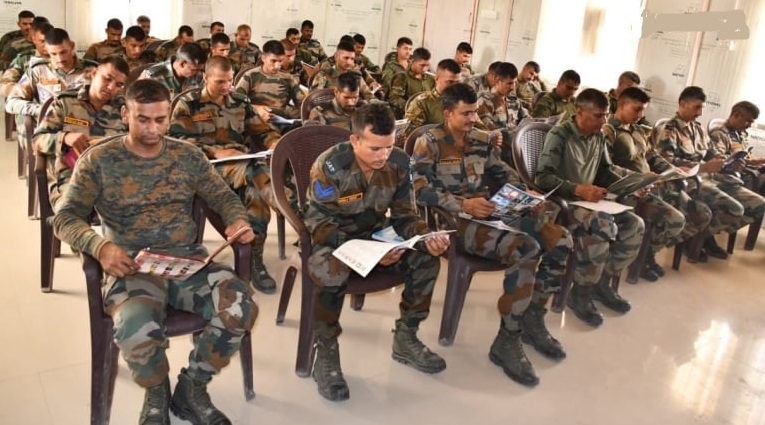 Agneepath Scheme replaced with Sainik Samman Scheme 2024, Defence Minister Rajnath Singh Relaunched Agniveer Scheme
Agneepath Scheme replaced with Sainik Samman Scheme 2024, Defence Minister Rajnath Singh Relaunched Agniveer Scheme
-
 Pakistan Announces 15% Increase in Defence Budget for 2024-25 Amid Economic Crisis
Pakistan Announces 15% Increase in Defence Budget for 2024-25 Amid Economic Crisis
-
 China's Latest DF-31AG ICBM Test: A Strategic Leap in Global Missile Capabilities
China's Latest DF-31AG ICBM Test: A Strategic Leap in Global Missile Capabilities
-
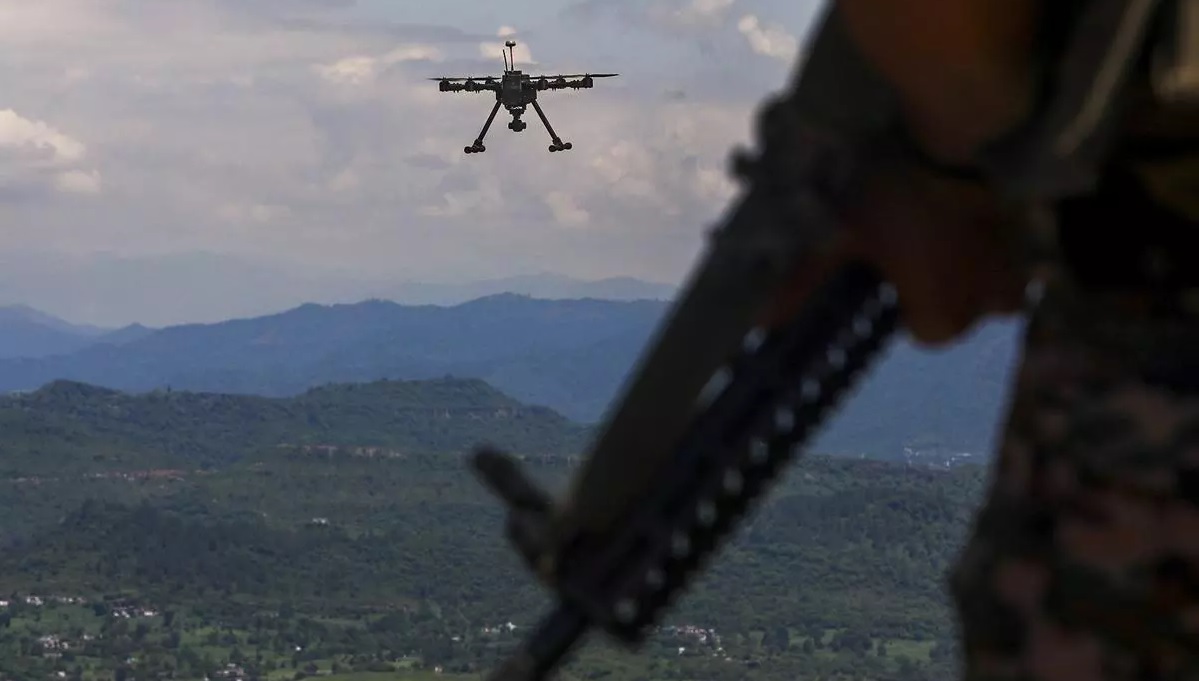 India's Defence Ministry Warns Against Chinese Parts in Military Drones Amid Security Concerns
India's Defence Ministry Warns Against Chinese Parts in Military Drones Amid Security Concerns
-
 China’s Super Radar Detects Mysterious Plasma Bubble Over Giza Pyramids
China’s Super Radar Detects Mysterious Plasma Bubble Over Giza Pyramids
-
 India's Indigenous Kaveri Engine Program with New Focus on Thrust and Performance
India's Indigenous Kaveri Engine Program with New Focus on Thrust and Performance
-
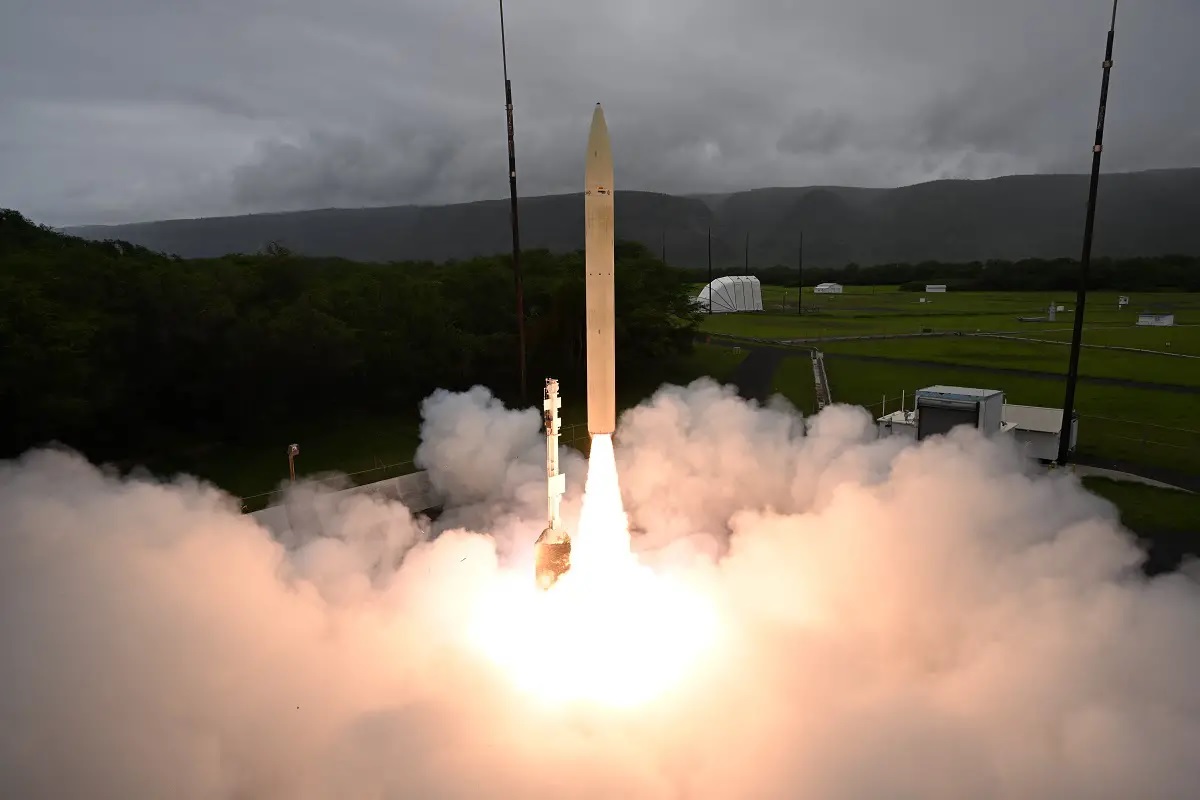 Successful Hypersonic Missile Test by U.S. Department of Defense
Successful Hypersonic Missile Test by U.S. Department of Defense
-
 Isro Draws up Ambitious Plan for 2024, says will Launch at Least 12 Missions
Isro Draws up Ambitious Plan for 2024, says will Launch at Least 12 Missions
Top Trending in 4 Days
-
 Russian Scientists Develops Cancer Vaccine, will Distribute Free from 2025 in Russia
Russian Scientists Develops Cancer Vaccine, will Distribute Free from 2025 in Russia
-
 Russia’s ‘Kalinka’ System Threatens Starlink: A Major Setback for Ukraine and Elon Musk’s SpaceX
Russia’s ‘Kalinka’ System Threatens Starlink: A Major Setback for Ukraine and Elon Musk’s SpaceX
-
 Zuchongzhi 3.0 vs. Google’s Willow: Chinese Quantum Computer Matches U.S. Rival in the Race for Superiority
Zuchongzhi 3.0 vs. Google’s Willow: Chinese Quantum Computer Matches U.S. Rival in the Race for Superiority
-
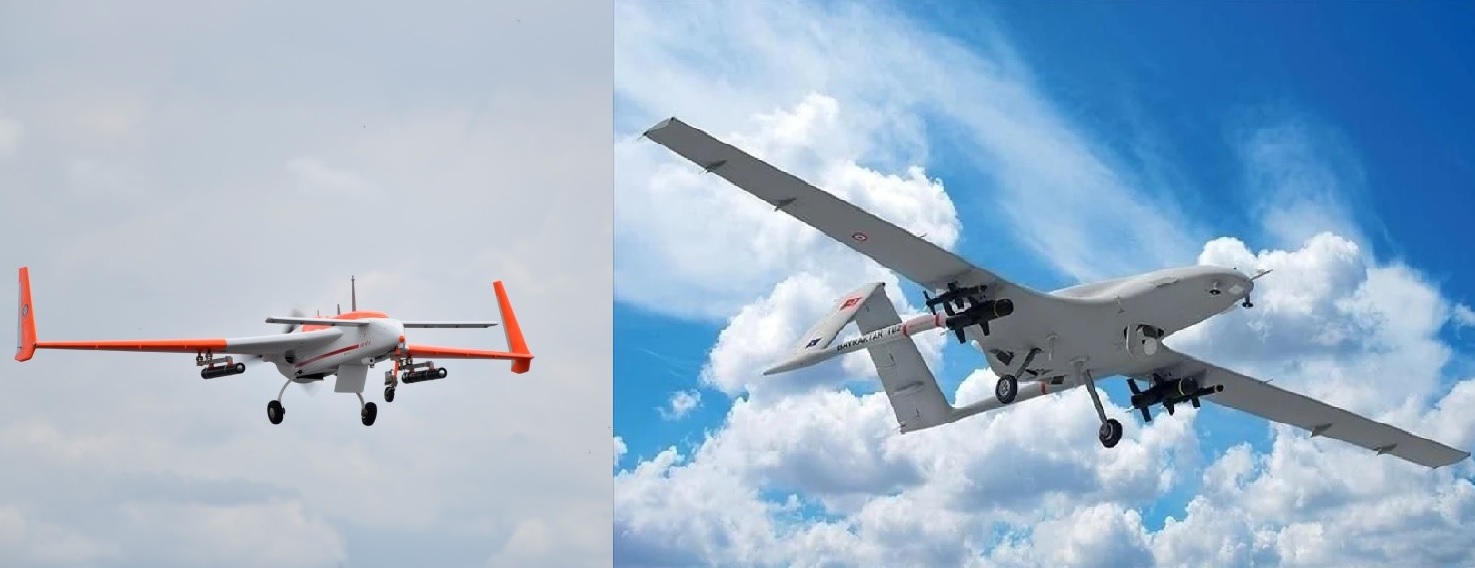 SRUAV-Weaponised vs Bayraktar TB2: A Detailed Comparison of India’s and Turkey’s Armed Drones
SRUAV-Weaponised vs Bayraktar TB2: A Detailed Comparison of India’s and Turkey’s Armed Drones
-
 Russian General Igor Kirillov Killed in Moscow Bombing
Russian General Igor Kirillov Killed in Moscow Bombing
-
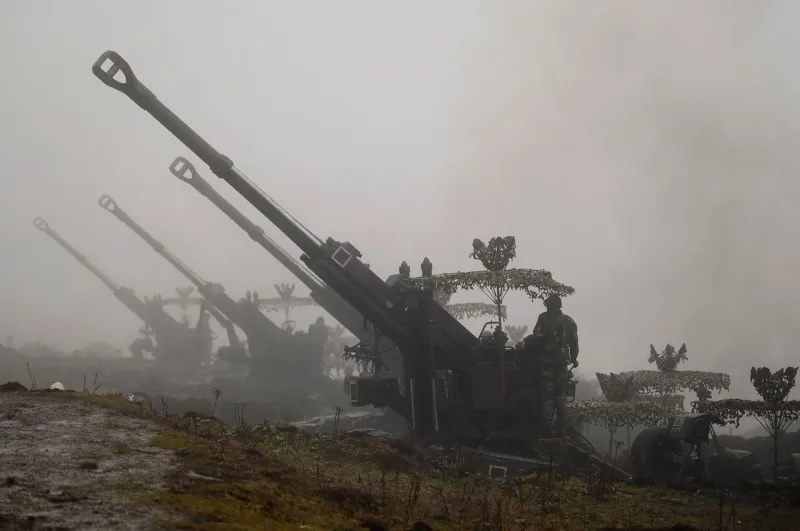 Pentagon Report: China Stations 120,000 Troops, Tanks, and Missiles Near Indian Border
Pentagon Report: China Stations 120,000 Troops, Tanks, and Missiles Near Indian Border
-
 Myanmar Rebel Group Recaptures Historical HQ After 30 Years, Reigniting Long-Standing Struggle
Myanmar Rebel Group Recaptures Historical HQ After 30 Years, Reigniting Long-Standing Struggle
-
 DRDO Launches ‘Dare to Dream 5.0’ to Revolutionize Helicopter Pilot Ejection Systems
DRDO Launches ‘Dare to Dream 5.0’ to Revolutionize Helicopter Pilot Ejection Systems


